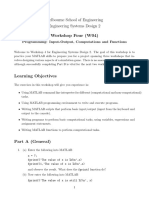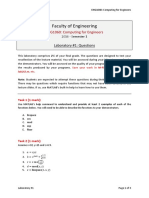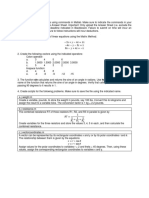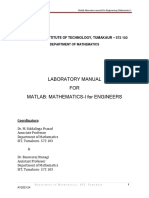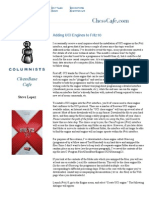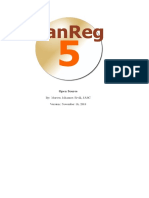0% found this document useful (0 votes)
141 views3 pagesAssignment
This document provides instructions for a MATLAB assignment due on May 20th, 2011. It must be completed individually and plagiarism is not allowed. Students must download a template from Blackboard, update M-files with their assignment code, and submit a ZIP file containing their solution files and any required data/function files. Late submissions within 2 days are allowed but will receive a 50% penalty. The assignment is worth 10% and code will be graded based on automatically running and producing correct results. Help is available through discussion boards and assignment file comments. Question 1 involves loading depth camera data, plotting the 3D point cloud, extracting wall positions, fitting lines to the walls, and identifying objects protruding from the walls like a door
Uploaded by
titnslaCopyright
© Attribution Non-Commercial (BY-NC)
We take content rights seriously. If you suspect this is your content, claim it here.
Available Formats
Download as PDF, TXT or read online on Scribd
0% found this document useful (0 votes)
141 views3 pagesAssignment
This document provides instructions for a MATLAB assignment due on May 20th, 2011. It must be completed individually and plagiarism is not allowed. Students must download a template from Blackboard, update M-files with their assignment code, and submit a ZIP file containing their solution files and any required data/function files. Late submissions within 2 days are allowed but will receive a 50% penalty. The assignment is worth 10% and code will be graded based on automatically running and producing correct results. Help is available through discussion boards and assignment file comments. Question 1 involves loading depth camera data, plotting the 3D point cloud, extracting wall positions, fitting lines to the walls, and identifying objects protruding from the walls like a door
Uploaded by
titnslaCopyright
© Attribution Non-Commercial (BY-NC)
We take content rights seriously. If you suspect this is your content, claim it here.
Available Formats
Download as PDF, TXT or read online on Scribd
/ 3














